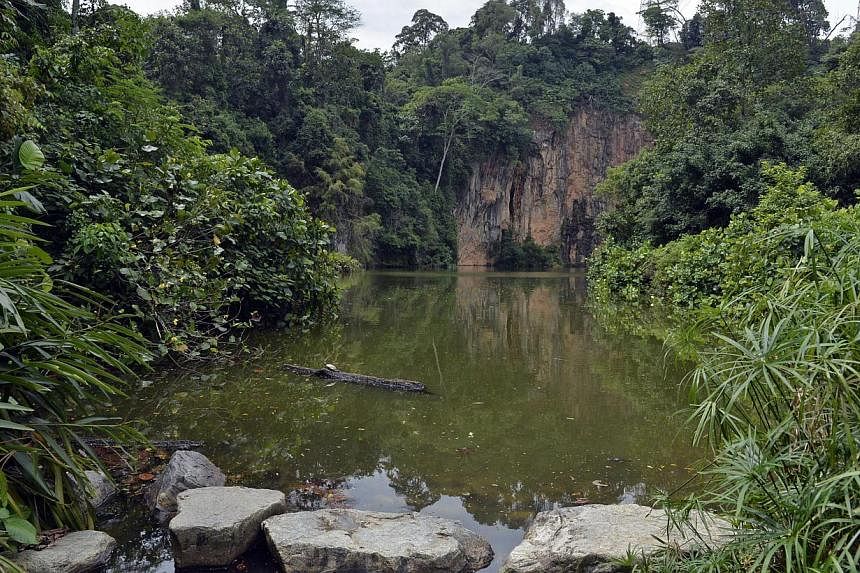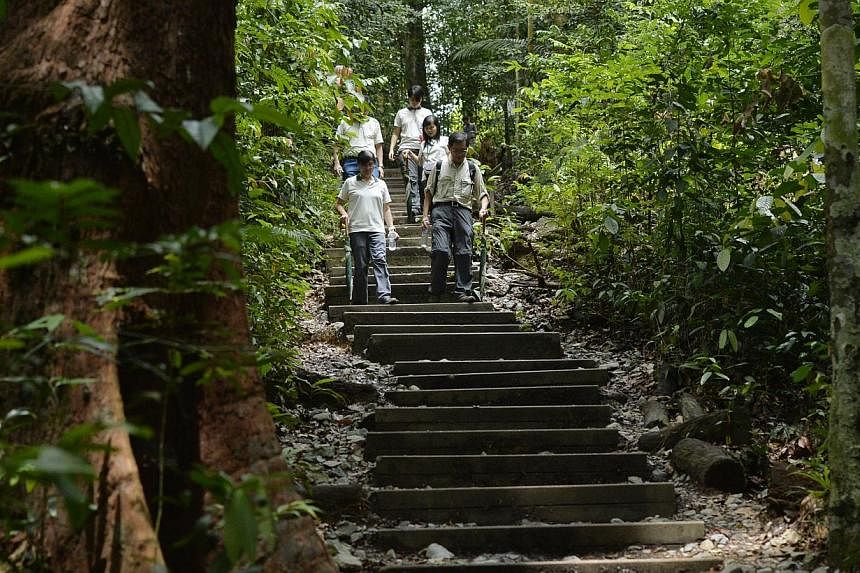The popular Bukit Timah Nature Reserve in central Singapore will be closed for six months from September for repair works. This is the first time that the 163ha reserve will be closed for repair, as trails, slopes and amenities in the park need to be repaired and upgraded. We look at five things about the only hill dipterocarp forest in Singapore.

1. When did the nature reserve open?
The Bukit Timah Nature Reserve was officially opened in 1992, although the rich biodiversity within the reserve spans further back.
In 1822, Dr Nathaniel Wallich, Superintendent of the Calcutta Royal Gardens, was the first to collect plants at the reserve. Years later, in 1854, naturalist Alfred Wallace collected beetles.
In 1937, Bukit Timah Nature Reserve was one of three forest reserves that were retained in a period where economic pressure for land development caused other reserves to be de-gazetted. The other two that were retained were in Pandan and Kranji.
2. What are the highlights at the reserve?
Bukit Timah Nature Reserve is the only hill dipterocarp forest in Singapore. This is unique as such a forest type usually occurs in regions that are 300 metres to 762 metres above sea-level.
The Nature Reserve also contains Singapore's tallest hill - the Bukit Timah Hill - that stands sentinel over the area at 163m.
It also contains at least 40 per cent of Singapore's native flora and fauna even though it makes up less than 1 per cent (0.2 per cent) of the country's area. It is home to animals such as the Plantain Squirrel, the Greater Racket-tailed Drongo and the Singapore Freshwater Crab - a very rare species of crab that can only be found in Singapore.
3. What are the key milestones?
The Bukit Timah Nature Reserve and the Central Catchment Nature Reserve once comprised a single forest fragment. They were separated when the Bukit Timah Expressway (BKE) was completed in late 1986.
A bridge to re-connect both reserves to aid in the dispersal of forest plant seeds was completed in late 2013.
In 2011, the reserve was designated as Singapore's second Asean Heritage Park after meeting criteria such as ecological completeness, representativeness, naturalness, high conservation importance and being a legally gazetted area. The first Asean Heritage Park was the Sungei Buloh Wetland Reserve in 2003.
4. Which are the areas which will have limited access while it undergoes repair works?
From September 15, the Nature Reserve will undergo a series of repair works to upgrade and restore its slopes, trails and amenities for about two years.
During the first six months, the reserve will be closed to the public as works commence on its Main Road leading from the Visitor Centre to the summit of Bukit Timah Hill.
After this, there will be limited access to the reserve for the next 18 months - nature enthusiasts will only be able to trek on its main route on weekends.
5. What will some of the new/improved features be after the facelift?
By the end of 2016, visitors to the Bukit Timah Nature Reserve will be able to expect newer amenities such as an upgraded visitor centre and an enhanced exhibition hall for outreach and educational activities.
More washrooms will also be built for the growing number of visitors to the reserve.
Last year, it welcomed more than 400,000 visitors - a five-fold increase from the 80,000 visitors it saw in 1992, when it was officially opened.
Nature lovers will also get to enjoy new boardwalk trails and dirt trails lined with rope railings for visitor safety. Boardwalks will also help protect the precious layer of topsoil and forest litter that teem with insects and other tiny organisms.
With "enrichment planting" works that NParks will carry out during the two-year period, visitors can also expect to see more plants growing by the sides of reserve's trails.
They will also get to enjoy an overall safer experience, as slopes will be reinforced to prevent landslides.







